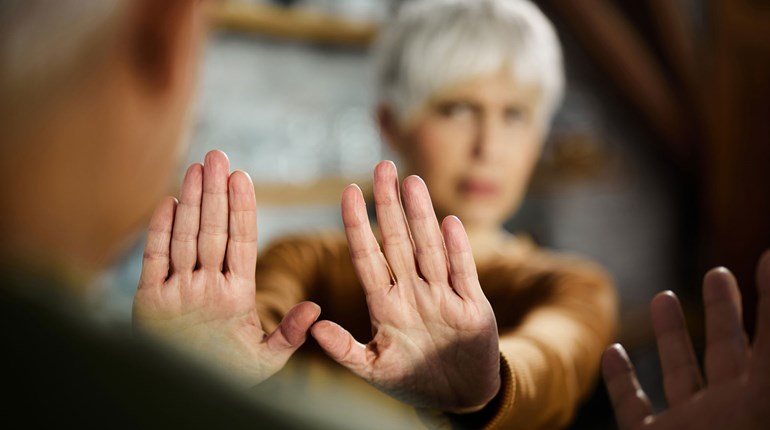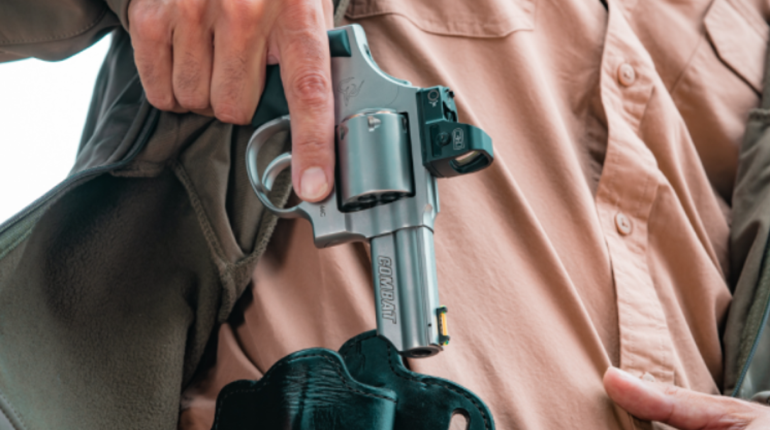
On numerous occasions, I’ve said that “You are responsible for your own safety.” However, having dealt with some deadly encounters, I can tell you your chances of survival are greatly increased when you have a good partner with you. Most men are blessed with having a woman beside them who is a great partner in life. The simple truth is she should also be an equal partner in your defensive planning.
Now, for most American guys to benefit from having a defensive partner, they are going to have to get over the idea that they are in charge of all things defensive and their duty is to protect the little lady from the evils of the world. In most criminal attacks where a man and woman are the potential victims, the crooks are going to try to neutralize the man first. When dealing with street gangs, home invasions, carjackings and the like, the bad guys are going to take the man down as quick as they can. If your wife is unarmed and untrained, what exactly do you expect her to do when you are the first one to hit the ground?
The simple fact is women can be just as “tactical” as any man. They can also handle any defensive firearm a man can handle. With proper planning and training, they can become a great defensive partner—instead of being a helpless dependent. In reality, she may be the one who ends up protecting you from the evils of the world.
Let her choose her own handgun
One of the biggest mistakes I see is guys who select their wife’s defensive handgun. They often end up buying her a gun they really wanted for themselves, without regard for whether it fits and suits her. It is far better to let your wife select the handgun she is going to rely upon, assuming it is in a proper defensive caliber. If the two of you end up carrying the same kind of handgun, that is great. If not, then as soon as she becomes proficient with her handgun, both of you should learn to operate the other’s pistol. Who knows? If you go down, your gun may be the closest one she can get her hands on, and vice versa.
Learn to work as a team
The first step is to learn to deal with criminal attacks as a team. This means that you don’t just stand together and shout at the bad guys, but instead you take tactical positions, slightly apart, and are prepared to deliver a one-two punch should shooting become necessary. When one of you is initially confronted by criminals, the other might slide into a flanking position.
Work out what each of your roles should be in various situations. Who is going to call 911? Which one of you is going to address the threat while the other takes a tactical support position? If you both try to run through the same door at the same time, like we see in the comedies, trust me, it won’t be the least bit funny.
Practice effective communication
Probably the most critical factor in team tactics is learning to communicate with each other. You should establish verbal and hand signals to tell the other person you have identified a potential danger. Some tactical couples have come up with names they don’t ordinarily call each other to sound the alarm. One woman in Arizona was confronted by an armed robber at the couple’s place of business. She called out to her husband in the back room, “Cowboy. Hey, cowboy.” The husband, fully alerted, got his handgun and the armed robber died. Cowboy was the word that gave the alarm.
Communication is even more important once bullets start flying. Any sane person will take cover, if it is available, when guns start going off. Communication enables you to know where your partner is located and what he or she is having to deal with. Should it become necessary for one of you to move to another location, communication will allow the other person to cover your movement.
You can also use communication to properly cover your partner while they reload. You may minimize your rate of fire until your partner is back in the fight, but you are alerted to the fact you need to stop any advance on your partner until the reload is complete. I like to holler, “Loading” when I need to cram a new magazine home, and I want to hear my partner yell, “Cover” when I do, so I know she hears me and has us covered until I get my pistol recharged. By the same token, I am going to sing out when I am reloaded so she will know I am back in the fight.
A number of things occur to us when we are in what is called the fight-or-flight mode. We tend to get tunnel vision, focusing on the threat in front of us, and we may not be aware of anything around us. Another physical characteristic of the fight-or-flight mode is our eardrums tend to tighten, making our hearing become somewhat impaired. Gunshots, even at close range, may sound like small firecrackers exploded at a distance. Therefore, we will probably not hear words spoken in a normal conversational tone.
For this reason, verbal communication should be performed in a loud, clear voice. This is also the reason that verbal signals ought to be delivered in as few words as possible. “LOADING!!!” is a much better signal than mumbling “I think I’m out of ammo and I probably ought to reload my gun, if that’s OK with you.”
Train as a team
Now, all of this may seem pretty elementary to some of you, but being put under a bit of stress can help put the whole thing into the proper perspective. Il Ling New and I found that out during a Team Tactics For Two class at Gunsite. After some fairly basic work on the square range, Range Master Charlie McNeese got us involved in
role-playing with simulated ammunition. A pair of “bad guys” enacted scenarios that caused us to have to separate and deal with two different threats. While our verbal communications were probably pretty good, there were several times we completely lost track of where the other was and had no idea of the situation they were caught up in—tunnel vision strikes us all.
McNeese also stressed the need for a couple to have a plan for dealing with most potential threats. Suppose, for instance, the bad guy is holding the woman with one arm and has a knife or gun at her head. If the woman simply goes limp and kicks her feet out from under her, the criminal won’t be able to hold her up, and her falling will expose his head—and maybe his upper chest—so that you can fire a clearer shot. This can be quite effective if you know how to signal when you are ready to shoot.
Any team-tactics plan should begin with good training. It is critical both of you attend thesame training class if at all possible so you will learn to speak thesame language. By doing so, you will learn the same defensive techniques, thereby creating a single foundation upon which to build your personal-defense plan.
Gunsite offers its Team Tactics For Two class several times each year, and I can’t recommend it highly enough. If that is not possible, then you should both enroll in a good defensive-handgun class. Study together, practice together and plan together. It’s the best way to develop a strong defense against a criminal attack.







































